Discover 15 hidden attractions, cool sights, and unusual things to do in Rzeszów (Poland). Don't miss out on these must-see attractions: Rzeszów Castle, Muzeum Okręgowe, and Muzeum Etnograficzne im. Franciszka Kotuli. Also, be sure to include Muzeum Dobranocek in your itinerary.
Below, you can find the list of the most amazing places you should visit in Rzeszów (Subcarpathian).
Table of Contents
Rzeszów Castle
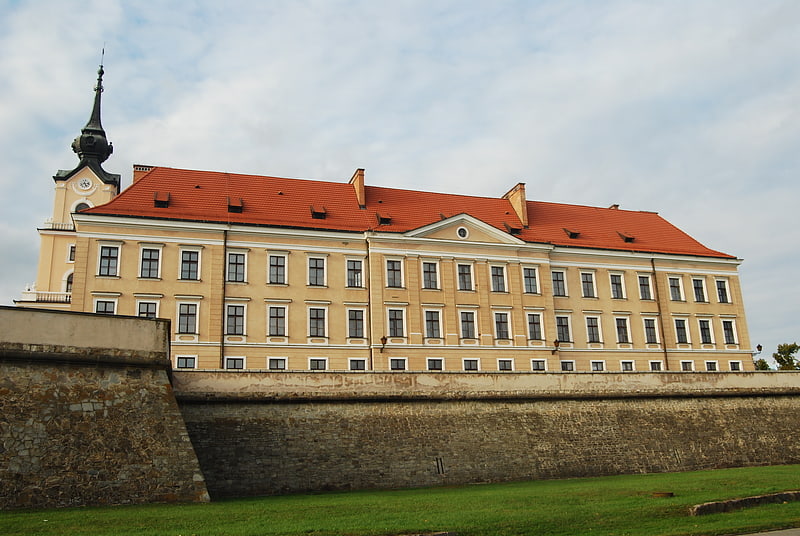
Also known as: Zamek w Rzeszowie
Castle in Rzeszów, Poland. Rzeszów Castle - one of the main landmarks of Rzeszów rebuilt between 1902-1906, located on the former grounds of the castle of the House of Lubomirski. The castle located between Aleja Pod Kasztanami and Aleja Lubomirski, Chopin Street, Śreniawitów Square and Colonel Lis-Kula Street. Currently the castle houses the seat of the provincial court, the building housed a prison up until 1981.
An early fortress stood on the castle's grounds since the sixteenth century. At the end of the same century, Mikołaj Spytek Ligęza built a Motte-and-bailey castle close by to the current castle's location. In 1620 he expanded the castle into a "Palazzo in fortezza". Since 1637 the castle was put under the ownership of the House of Lubomirski. Most of the building works were done by Tylman van Gameren and Karol Henryk Wiedemann. In 1820 the complex was brought under Austrian authorities; which adapted the building for a courthouse and a prison. The building was deconstructed at the beginning of the twentieth century due to its poor state. The only parts left from the original complex are the gatehouse and bastion fortifications.
The Lubomirski Palace is located close to the Castle.[1]
Address: pl. Sreniawitow 3, 35-032 Rzeszow
Muzeum Okręgowe
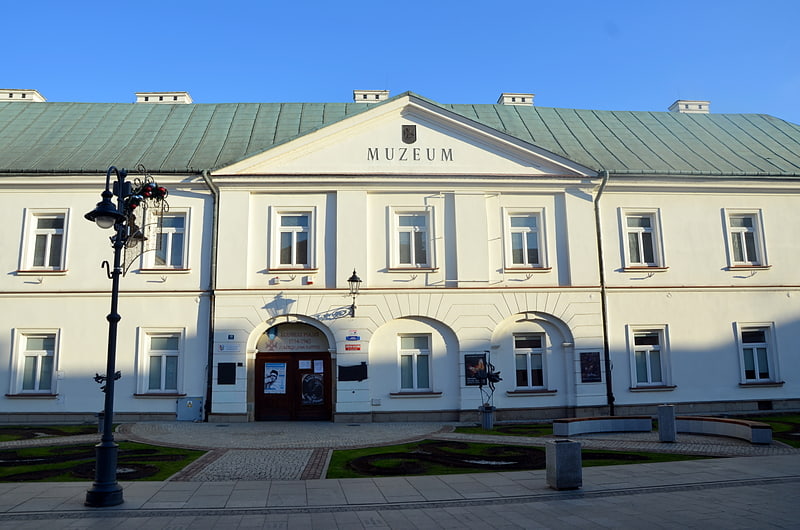
District Museum in Rzeszow - a regional museum established in 1935 with over 240,000 exhibits. The museum has a separate ethnographic department. Apart from the main department, situated in the building on 3 Maja Street, the museum also houses the Ethnographic Museum and the City History Museum, whose main attraction is the Underground Tourist Route under the market square and a permanent exhibition covering exhibits from the 14th century to World War II. An additional branch is the Julian Przybos Biographical Museum in Gwoznica Dolna.
The main building of the museum is the former monastery of the Piarist convent (1655-1784) built between 1644-1649 by Jan Canger. It was extended and rebuilt in the years 1695-1708 according to the design of Tylman of Gameren. The façade is late baroque. After the dissolution of the order, the building was used for secular purposes. Since 1954, it has been a museum. It houses the following departments: Archaeology, Art, History, Library, Administration and the Art Conservation Studio. Among the most valuable collections of the museum is the so-called "Dabski Family Gallery", which was donated to the city, nevertheless, the paintings were claimed by the Ossolineum. In 2015, the Rzeszów collector Jan Partyka donated his collection of militaria to the museum. The permanent exhibition titled "Polish Soldier 1914 - 1945: The Collection of Jan Partyka" tells the story of successive stages of the fight for independence. Among the exhibits one can find a wide range of souvenirs such as: decorations, commemorative badges, emblems, personal souvenirs of soldiers fighting for independence, as well as equipment, weapons, uniforms of a given period.
The Museum was awarded the badge of honor "Meritorious for the Podkarpackie Province".
Plaques honoring donors to the museum have been established in the entrance lobby of the museum building: Francis Moskva (2007) and Jan Partyka (2015).
Address: 3 Maja 19, 35-030 Rzeszów
Muzeum Etnograficzne im. Franciszka Kotuli
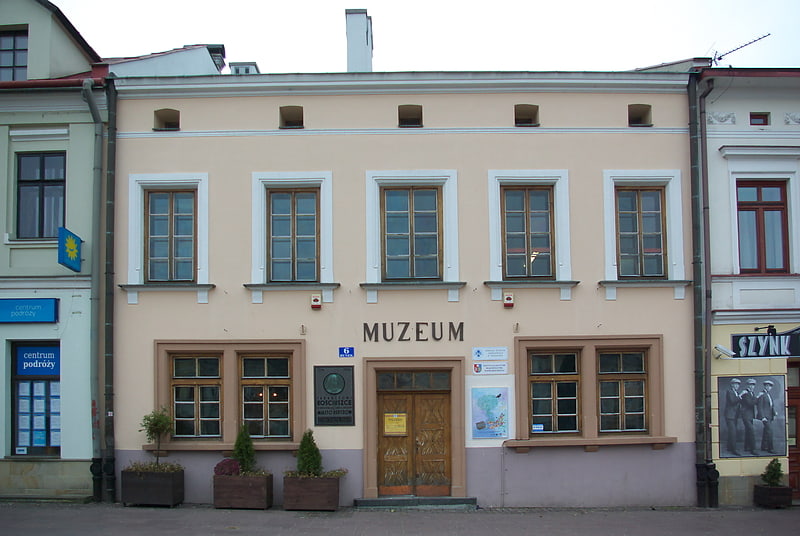
Museum
Address: Rynek 6, 35-330 Rzeszów
Muzeum Dobranocek

The Cartoon Museum in Rzeszów is located in the city center, near the Rzeszów market square. The museum was established by a resolution of the City Council on 29 January 2008. It presents exhibits from the collection of Wojciech Jama. The collection of the "Cartoon Museum" was transferred to the city by a notarial deed on 24 January 2008. The Museum of Bedtime Cartoons was officially opened on 22 March 2009.
In addition to puppets from the puppet movies, the museum displays all sorts of items related to the popular bedtime shows. Among them are toys, books, posters, philatelic values, food packaging, cosmetics, often with the original contents. The collection is adorned with original dolls from the films The Adventures of Colargol the Teddy Bear, Teddy Uszatek, Plastusiowy pamiętnik, Pacyk's Colorful World, Maurycy, and Hawranek.
Address: Mickiewicza 13, 35-064 Rzeszów
Muzeum Historii Miasta Rzeszowa
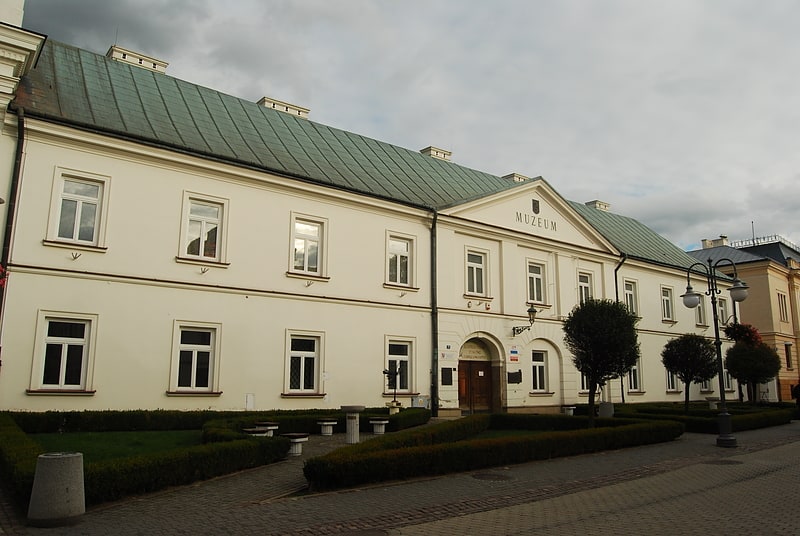
District Museum in Rzeszow - a regional museum established in 1935 with over 240,000 exhibits. The museum has a separate ethnographic department. Apart from the main department located in the building on 3 Maja Street, the museum also includes the Ethnographic Museum and the City History Museum, whose main attraction is the Underground Tourist Route under the market square and a permanent exhibition covering exhibits from the 14th century to World War II. An additional branch is the Julian Przybos Biographical Museum in Gwoznica Dolna.
The main building of the museum is the former monastery of the Piarist convent (1655-1784) built between 1644-1649 by Jan Canger. It was extended and rebuilt in the years 1695-1708 according to the design of Tylman of Gameren. The façade is late baroque. After the dissolution of the order, the building was used for secular purposes. Since 1954, it has been a museum. It houses the following departments: Archaeology, Art, History, Library, Administration and the Art Conservation Workshop. Among the most valuable collections of the museum is the so-called "Dabski Family Gallery", which was donated to the city, nevertheless, the paintings were claimed by the Ossolineum. In 2015, the Rzeszów collector Jan Partyka donated his collection of militaria to the museum. The permanent exhibition titled "Polish Soldier 1914 - 1945: The Collection of Jan Partyka" tells the story of successive stages of the fight for independence. Among the exhibits one can find a wide range of souvenirs such as: decorations, commemorative badges, emblems, personal souvenirs of soldiers fighting for independence, as well as equipment, weapons, uniforms of a given period.
The Museum was awarded the badge of honor "Meritorious for the Podkarpackie Province".
Plaques honoring donors to the museum have been established in the entrance lobby of the museum building: Francis Moskva (2007) and Jan Partyka (2015).
Address: Rynek 26, 35-064 Rzeszów
Letni Pałac Lubomirskich
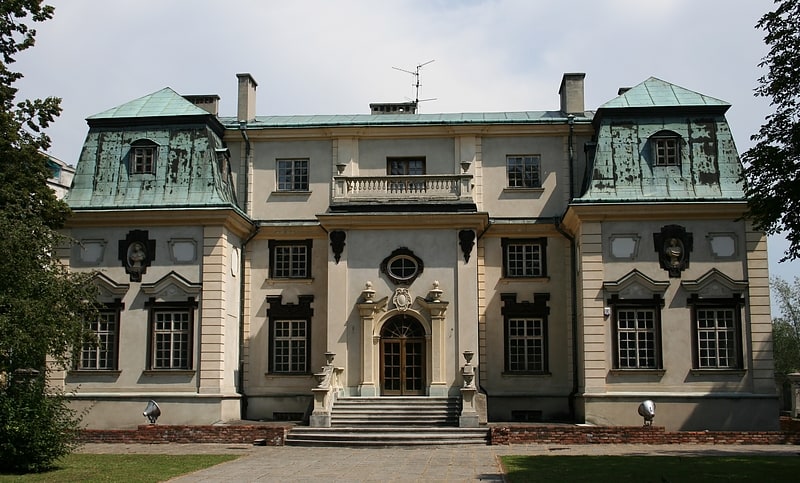
Lubomirski Summer Palace in Rzeszów - a historic late Baroque residence with Rococo elements, located on Lubomirski Avenue in Rzeszów, near the castle. It was built in the 1790s on the site of the former vineyard of Mikołaj Spytek Ligęza, as part of a larger complex which was intended to create a large garden around the castle residence.
Address: ul. Jana Dekerta 2, 35-030 Rzeszow
Kościół Św. Krzyża
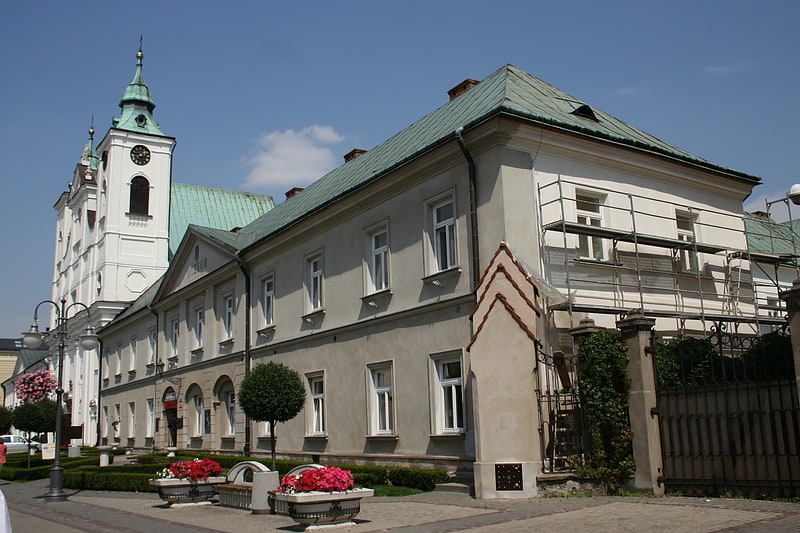
Holy Cross Church and the Popish convent - a complex of buildings linearly distributed along 3 Maja Street in Rzeszow.
Currently, only the church, which is the core of the building, has retained its original function, while the remaining parts of the monastery gained different functions over time. The southern wing houses the District Museum, while the northern wing houses the St. Konarski High School No. 1.
The temple is sometimes referred to as the "students' church", mainly due to the traditions of the nearby high school (formerly a higher grammar school) and the history of the church, although the actual function of the academic churches is performed by the churches of St. Jacek (by the Dominican monastery) and St. Jadwiga.
The building complex was listed as a historic landmark on June 8, 1979, under the number 1027.
Address: 3 Maja 20, 35-030 Rzeszów
Jewish cemetery
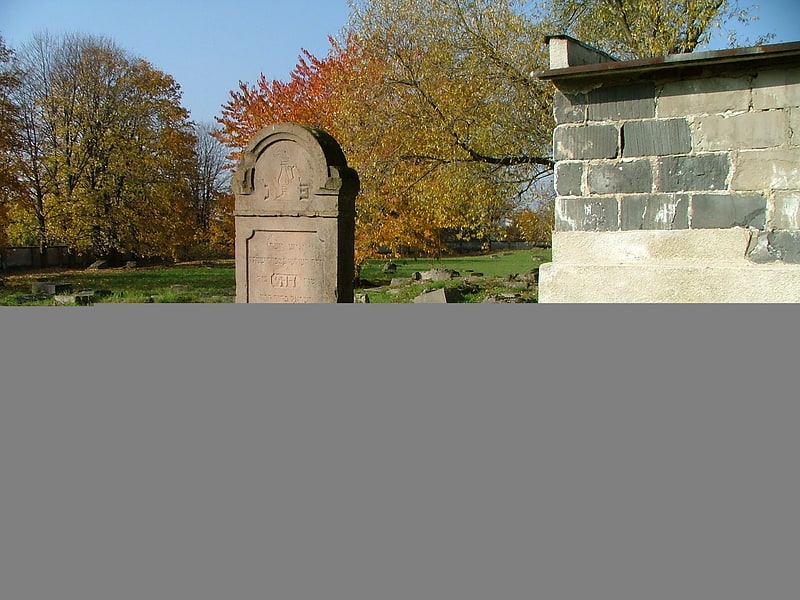
Jewish cemetery in Czekau in Rzeszów sometimes also New Jewish cemetery in Rzeszów - kirkut located in Rzeszów on Rejtana Avenue was established in 1849. It has an area of 2.5 ha and can be distinguished by an older and a newer part. The cemetery was completely devastated during World War II. Numerous tombstones were used for paving Asnyka, Szopen and other streets as well as the market square in Tyczyn. There are 754 matzevot left, most of them broken. The oldest preserved matzeva dates back to 1851.
There is an obelisk on the grave of Jews murdered during the Holocaust, founded in 1947 by the survivors of Rzeszow Jews. In 1986 cleaning works were carried out and the fence was rebuilt.
Address: Ul. Dołowa, Rzeszów
Lisia Góra nature reserve
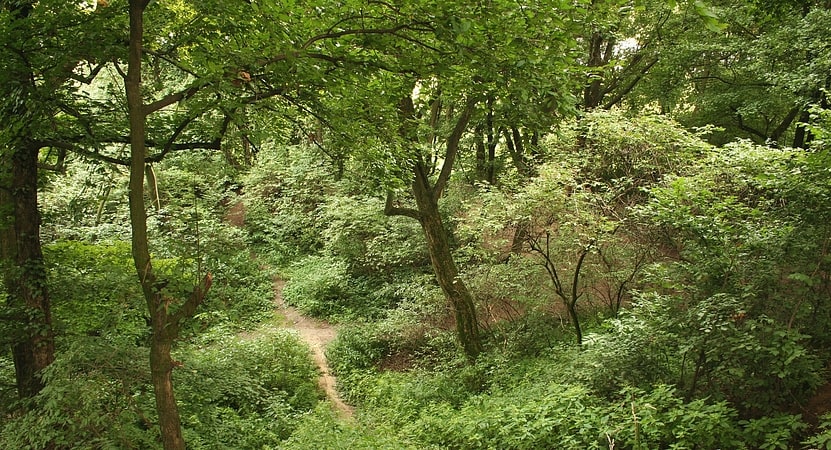
Lisia Góra - a nature reserve located in Rzeszów, Podkarpackie Province. It is located in the southern part of the city, on the Wisłok River, at an altitude of 200-218 m.
number according to the provincial register - 66, appointing document - Dz.U.98.166.1223, area - 8,49 ha (appointing document stated 8,11 ha), type of reserve - forest
type of reserve - plantings and crops
old trees reserve subtype
ecosystem type - forest and coniferous
lowland forest ecosystem subtype
subject of protection - oak old-growth forest with numerous aged pedunculate oaks of magnificent size
The old-growth forest of the reserve "Lisia Góra" is a natural peculiarity, because it creates an island of oak forest exposed in the landscape of the city and the nearest neighbourhood (it is a "mini Bialowieza Forest"). There is the largest concentration of mature pedunculate oak specimens (about 100) in the Subcarpathian province in such a small area.
The most magnificent ones reached 606.5 and 536 cm circumference, while the circumference of two common hornbeams - 246 and 202 cm, and of a field maple - 236 cm. The following plant communities were found in the reserve: low oak-hornbeam forest, wet oak-hornbeam forest, elm-ash forest with two sub-components, comfrey and dulse-leaved sorrel community, meadow and carpet plant community, bog and rose bindweed community, and water lash community. Three mountain species and seven protected species grow here. The protected plants include the following: common periwinkle, common ivy, common centuria, common columbine, primrose, and the following shrubs: coral calla and common buckthorn.
The fauna is represented, among others, by 176 species of birds. In wintertime the reserve is the place of accommodation for numerous flocks of rooks, coming from Scandinavian countries to spend the winter. Amphibians are quite common: common grass frog and moor frog, common, gray and green toad, less common tree frog and fire-bellied toad. Reptiles are represented by: sand lizard and - since a few years - grass snake. The most valuable insects include goatsucker and tanager.
Podziemna trasa turystyczna
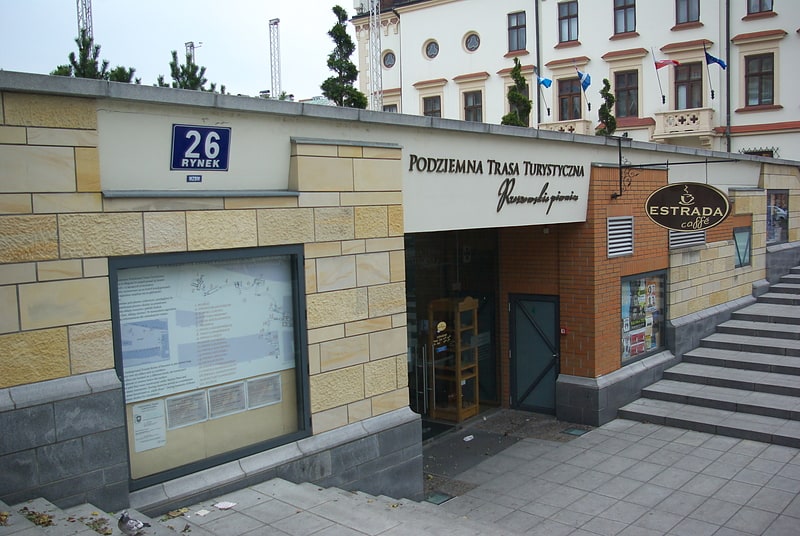
Rzeszów Underground Tourist Route "Rzeszowskie Piwnice" (Rzeszów Cellars) - a group of former city cellars, connected into a tourist route, located in Rzeszów, under the Old Town Square. The entrance to the cellars is located at the Rzeszów Town Hall, and the exit - at 12 Rynek. Currently, the manager of the route is the Municipal Housing Management in Rzeszów. The length of the route is 396 meters.
The decision to create the underground tourist route was made in 1994, although the idea of its creation dates back to the 1980s. Earlier, in the 1960s and 1970s, specialists from the AGH University of Science and Technology in Cracow carried out preservation and conservation works in the Rzeszów basements. However, the mining works aimed at connecting the underground rooms with each other started in 2000. In April 2001 the route was opened to the public. It was then 213 metres long and led through 34 rooms (cellars and corridors). The route began at Rynek 12, entrance from Baldachówka Street (current exit), and ended at Rynek 19, in the vicinity of the House of the Polish Diaspora. It was administered by the District Museum in Rzeszów. In 2004 the decision was made to build the second stage of the underground route; this investment was connected with reconstruction of the main Market Square. As a result of works carried out in 2005-2007 the route was extended by another 156 metres. Its reopening took place in December 2007.
Currently the route consists of 40 interconnected rooms, located on three floors, at a depth of 0.5 to 10 meters below the surface of the Market Square. It consists of cellars, dating from the period from the fourteenth to the eighteenth century. It leads under the main Market Square plate and under the tenement houses no. 11, 12, 13, 14, 19, 20, 21 and no longer existing 28 and 29. Among the available rooms there are: Blavatnik's Cellars, Kochanowicz's Grub, Rzeszowski's Cellar, Lubomirski's Tract, Merchants' Road, Honey Cellar and Tartar Dungeons - the narrowest place on the route (70 cm). The cellars house a historical and educational exhibition, including replicas of knights' armour, white and firearms, old ceramics and objects of everyday use, as well as - in the Coat of Arms Corridor - coats of arms of the former owners of the city, the lands and provinces where it was located, and the coats of arms of Rzeszów itself.
The trail is a year-round facility, open except on Mondays and holidays. There is an admission fee and tours are in groups, led by a guide.
Fontanna multimedialna

Multimedia fountain in Rzeszów - electronically controlled fountain located on Lubomirski Avenue in Rzeszów. In its vicinity there is also the historic Lubomirski Summer Palace in Rzeszów.
The facility was installed in place of the former housing estate playground, and the cost of its construction amounted to over 7 million PLN. The entire construction consists of several tanks: a circular fountain-mirror (with a water surface of 127m2), a dry fountain-interactive (130m2), as well as five flower fountains (with a total surface of 30m2). The water fountain is equipped with nearly 1600 nozzles with different functions and 143 light points. Thanks to this, each multimedia show includes a mixture of water, light (using, among others, the so-called water screen) and sound elements, additionally supported by lasers and decorative smoke.
The tank is controlled by electronic devices from the engine room located directly under its surface. In its vicinity, an amphitheatre-like tribune with 300 seats was built. Additional visual effect in terms of aesthetics is provided by a number of decorative trees and bushes and elements of the so-called small architecture.
The fountain (along with the surrounding plaza) was put into public use for the first time on August 17, 2013. It was then that the first show using it took place, which attracted nearly 10 thousand viewers. The performance, directed by Bogumił Palewicz, lasted 45 minutes and consisted of three parts: the evening show and two others, entitled "The History of Music and Innovative Rzeszów". History of Music and Innovative Rzeszów.
Thematic shows are still one of the main tourist attractions in this part of Rzeszów. The fountain itself is considered to be one of the most innovative and technologically advanced structures in Poland (being at the same time the third largest building of this type), and even in Europe.
Stary Cmentarz
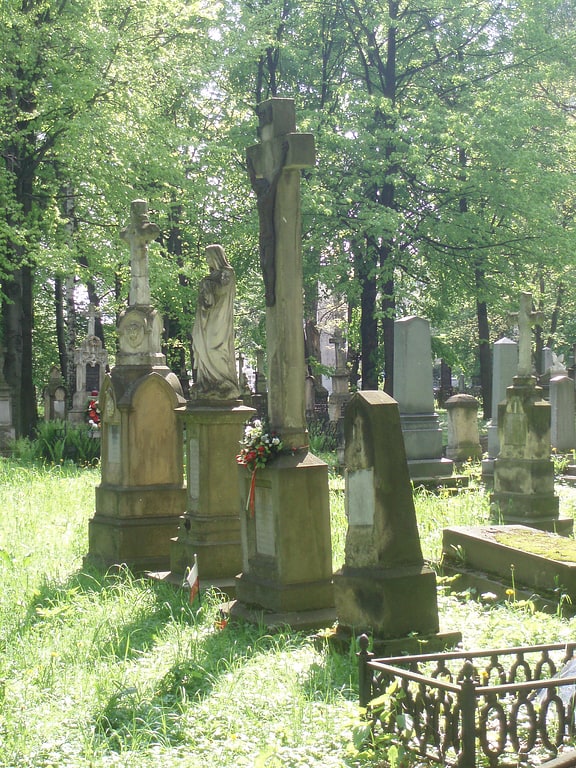
Old Cemetery in Rzeszow - the oldest surviving necropolis of the city. It covers an area of 3.65 ha, between Targowa Street and Wisłok River. It is estimated that about 40 000 people rest there. In 1968 it had 613 tombstones and tombs. Currently it has 622 of them.
Kościół pw. św. Józefa
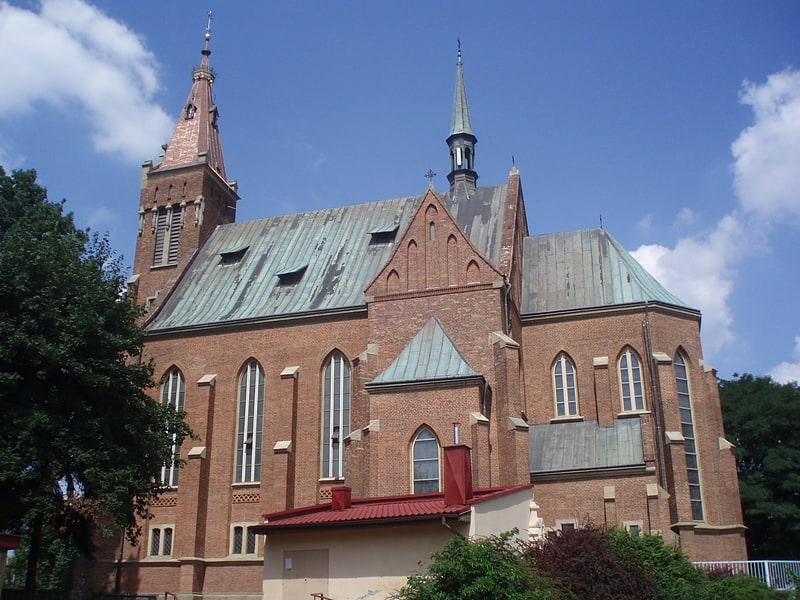
St. Joseph's Church is located in Rzeszów between Lubelska and Partyzantów Streets.
Address: Partyzantów 38, 35-234 Rzeszów
Bazylika Wniebowzięcia Najświętszej Marii Panny
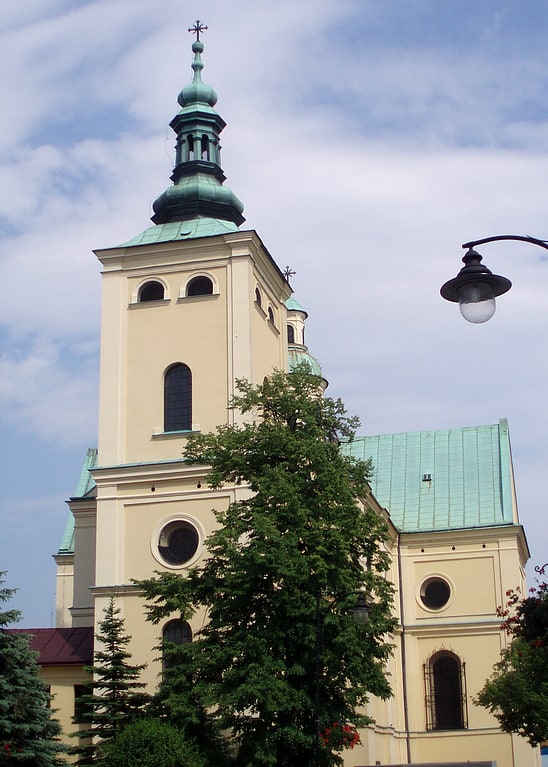
Basilica of the Assumption of the Blessed Virgin Mary in Rzeszów is both a parish church of the same name and the Sanctuary of Our Lady of Rzeszów. The temple is located in the very center of the city in the downtown area on the edge of Rzeszow's Old Town. It is directly adjacent to the Bernardine Monastery. The whole complex is protected by law and has a status of a monument.
Address: ul. Sokola 8, 35-010 Rzeszow
University of Rzeszów
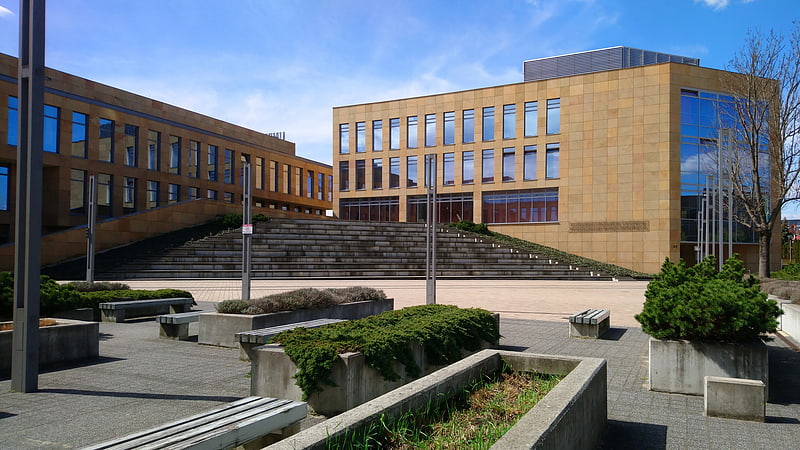
The University of Rzeszów is a university in Rzeszów, Poland. The patron of the university is Saint Queen Jadwiga of Poland.
It was officially established in 2001 by combining several older institutions in the city. The current university comprises the former:
- Rzeszów branch of the Maria Curie-Skłodowska University
- Higher School of Education
- Economics department of the Hugo Kołłątaj Academy of Agriculture
The school has over 22,000 students.[2]